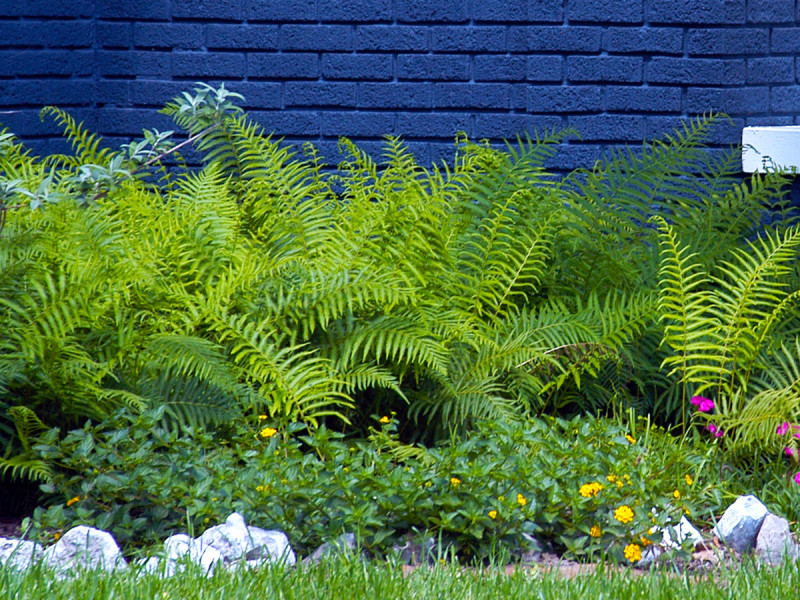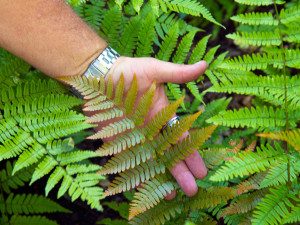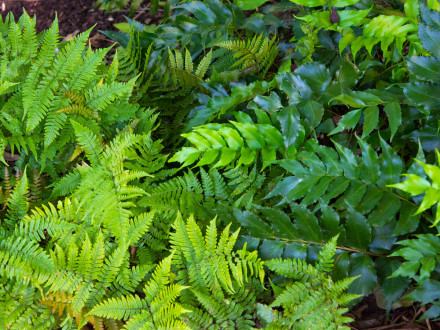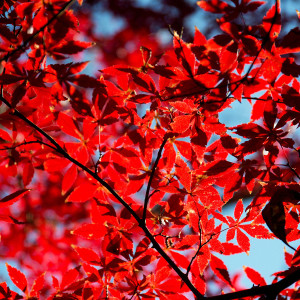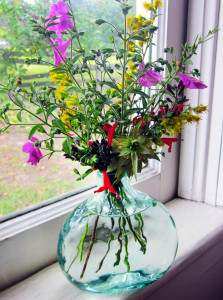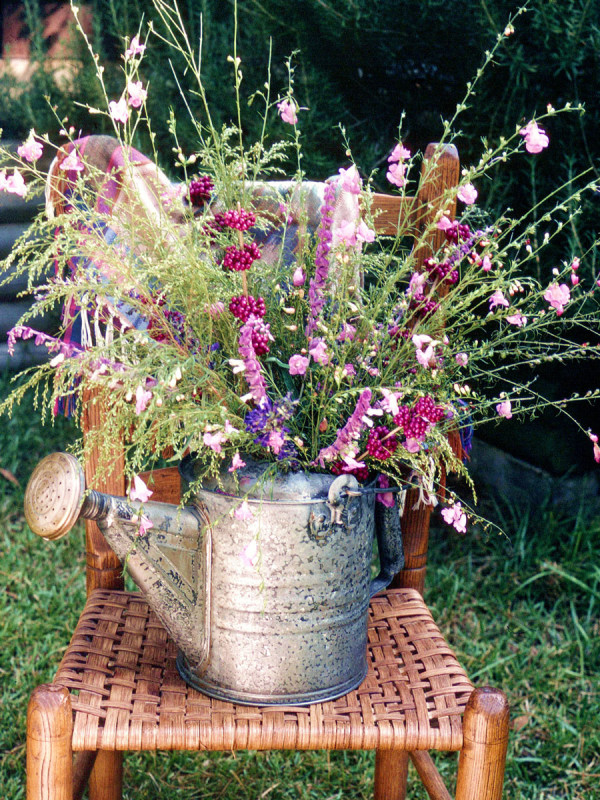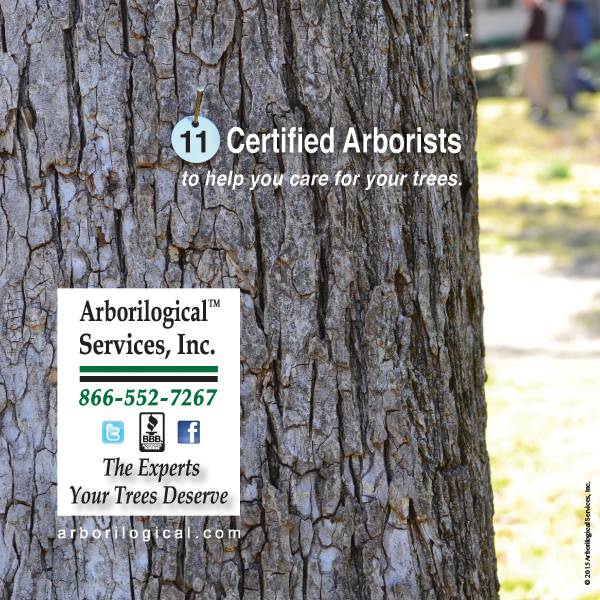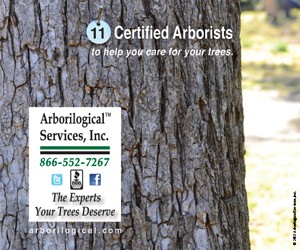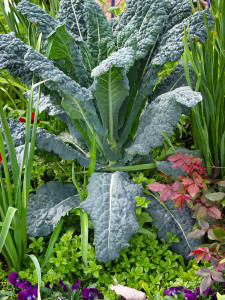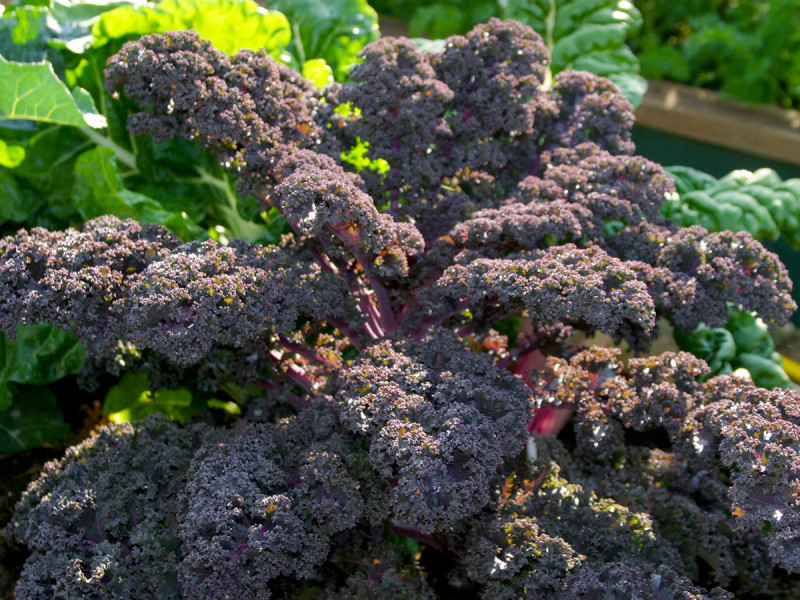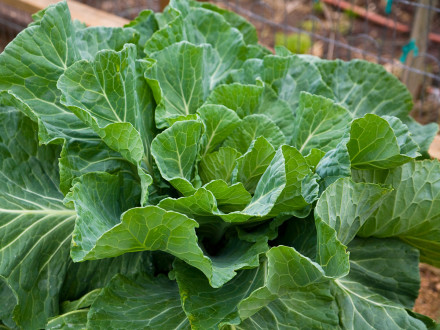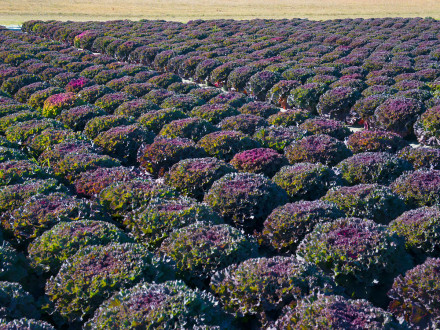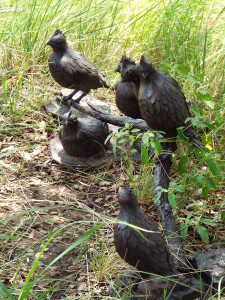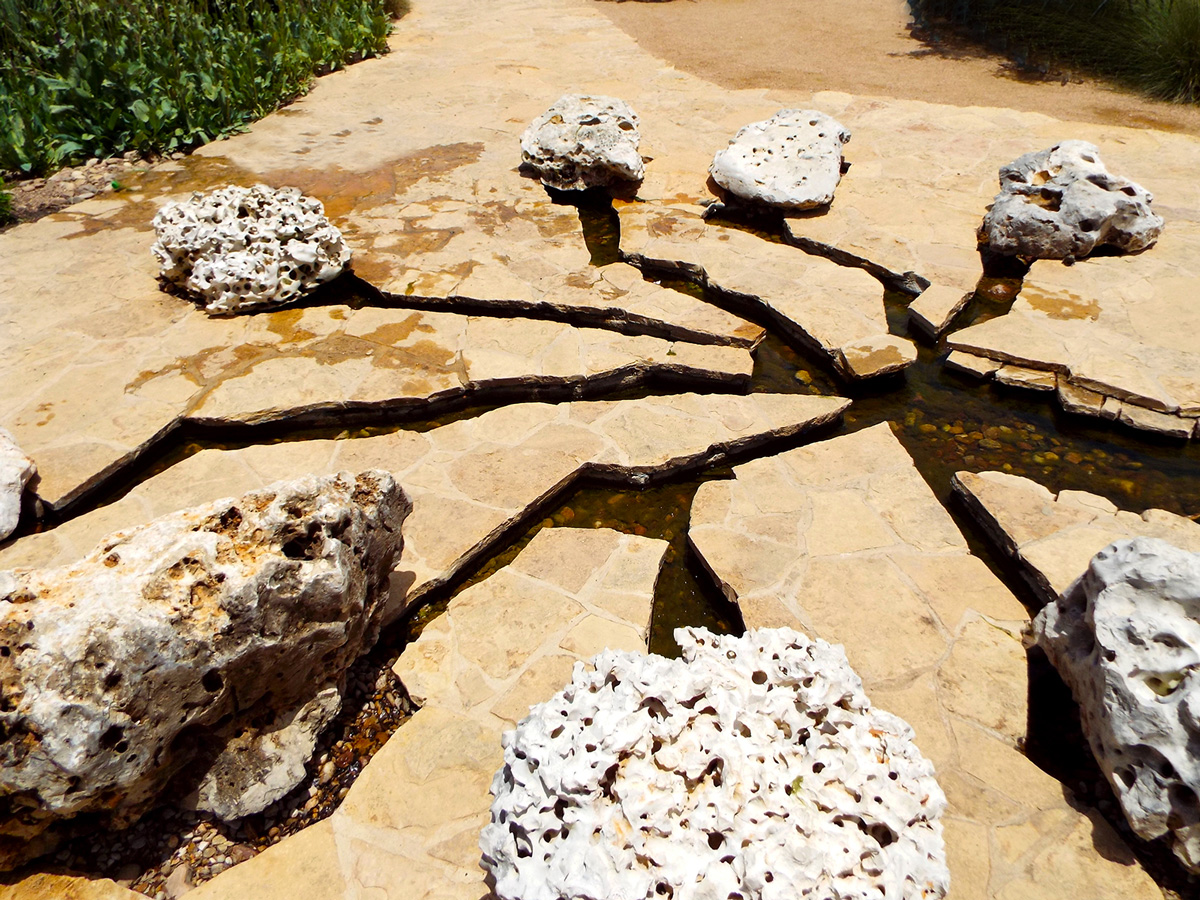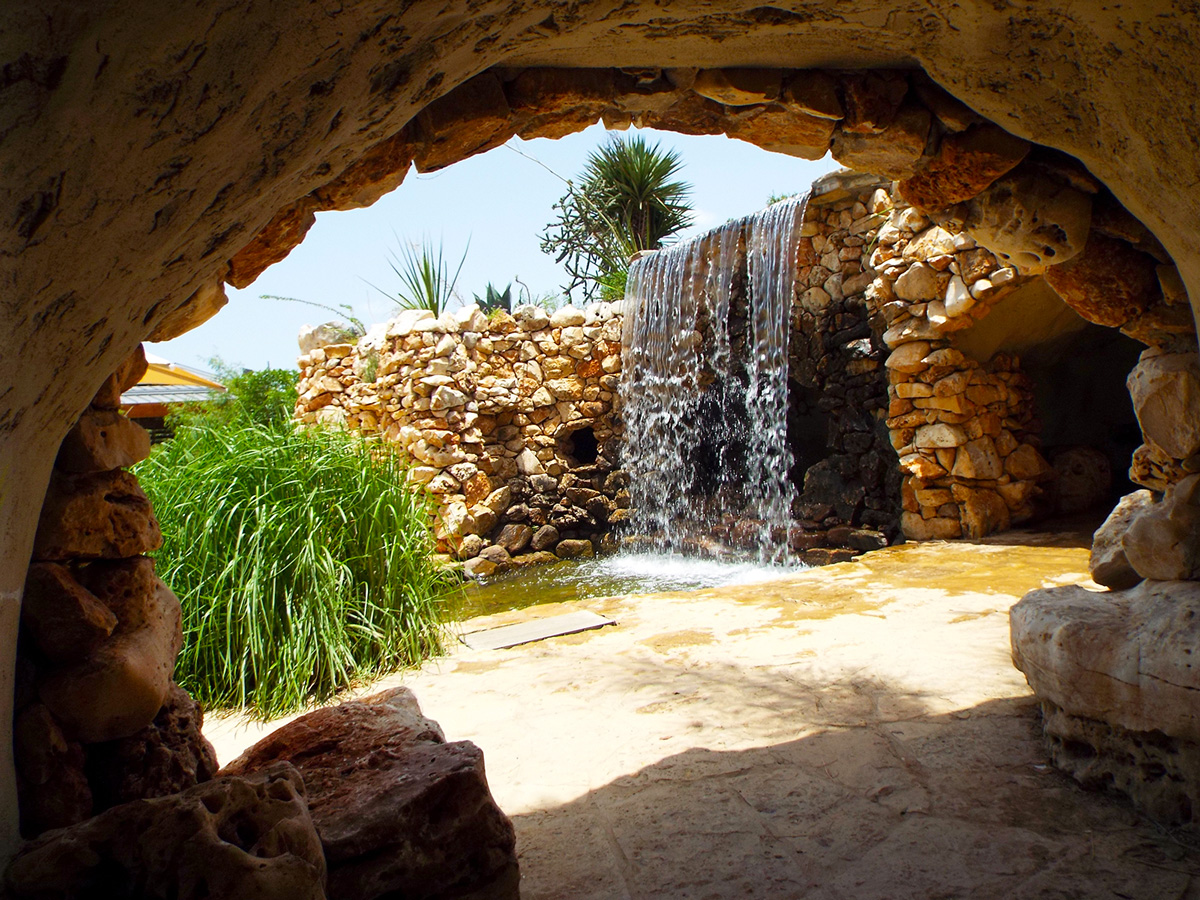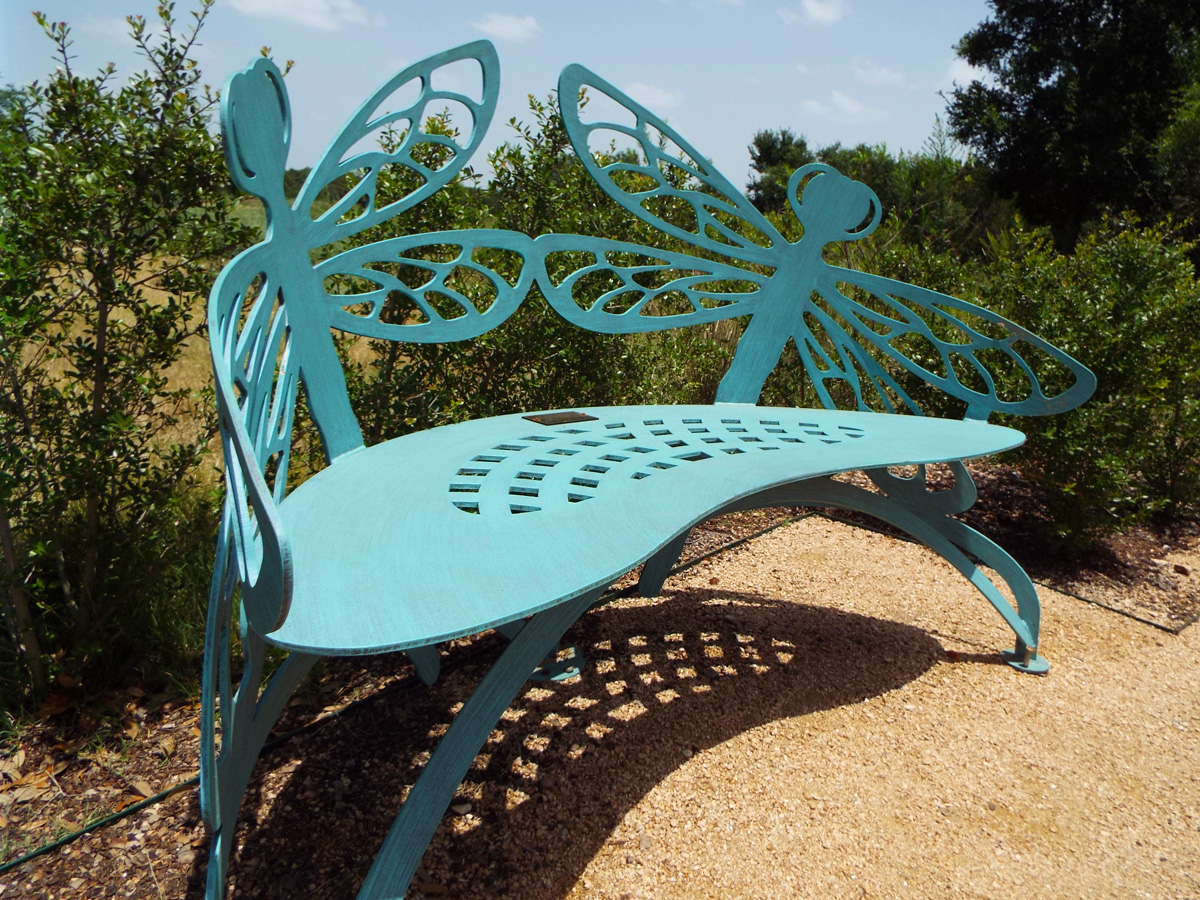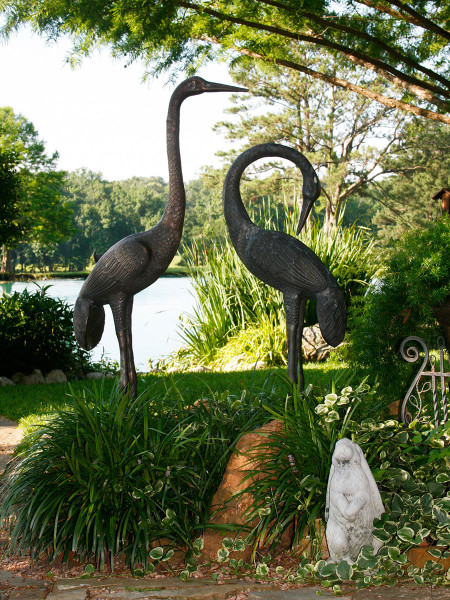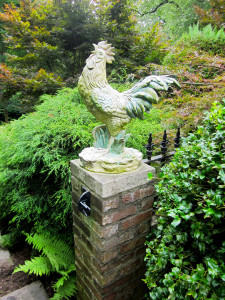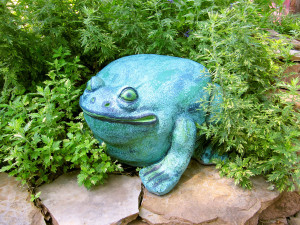SHADE GARDENS — the bane of most gardeners’ existence. We want our trees, we need our trees, but we also want the color that looks so spectacular in our sunnier spots. I’ve been there, cramming color into every square inch of the shade garden. It looks great for about three weeks, and even then it’s not very interesting, because all that’s present are the usual suspects – begonias, impatiens, and caladiums.
Shrubs help us, and we are pretty good at picking the ones that can be the backbones of the garden – oakleaf hydrangeas, nandinas, gardenias (if we are good), etc. The problem with them is that they all have a rather short season of interest and color. When we need more spectacle in shade, ferns are the way to go.
When autumn comes around, other color is all but done, but ferns can easily carry the shade garden through the last of the season. The players that are the best at this include cinnamon fern, autumn fern, tassel fern, holly fern, and the one that everyone seems to love, maidenhair fern.
All ferns tend to like the same conditions. None of them will stray too far from the shade. Moisture and fertility are prerequisites, and space is a good thing, since most will spread over time.
• Cinnamon fern (Osmunda cinnamomea) is a great player; when the light starts to get low and the temperatures are dropping, it gets frisky and decides that reproduction is the right thing to do. It sends up fronds from the center of the plant that are completely dedicated to reproduction. When these ripen off, the entire frond cluster turns a brownish, golden cinnamon color, giving the fern its name. A great thing about these fertile fronds is that when the plant is finished with them, they make great markers for bulbs. Cut them off, surround the bulb-planted area and do not disturb.
• Autumn fern (Dryopteris erythrosora) is our next player. This foot-tall member is evergreen, but before it hardens itself for the winter, it produces new striking, coppery-colored growth that contrasts nicely with the older mature foliage in several hues of green. If you can find the cultivar called ‘Brilliance’, you will get even more of these fantastic colored fronds.
• Tassel fern (Polystichum polyblepharum) is the second evergreen member of this group, and its clean habit and interesting texture make it a must in the garden. Tassel fern, too, is rarely more than a foot tall, but its coarse texture, reddish hairs on the stems, and the folding tips of the stiff fronds (from which the fern derives its name) give it a great look that allows it to stand apart from most other botanical interests.
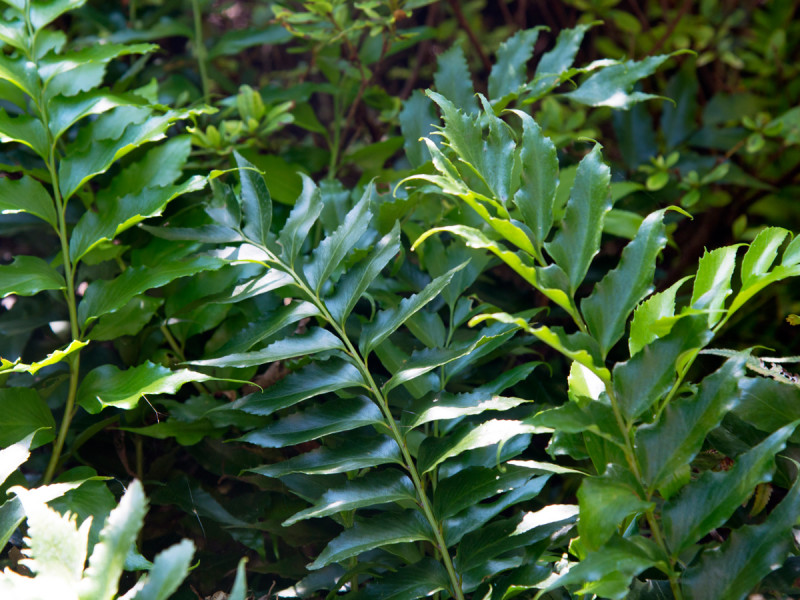
Always handsome, holly fern is a dependable staple in Texas shade plantings south of the I-20/30 corridor.
• Holly fern (Cyrtomium fortunei) is quite possibly the best-known member of this group. Its strong constitution and faithful evergreen nature make it a highly used fern in the North Texas garden. Like tassel fern, it has a coarse texture, but the quality that makes it so beloved is its ease of cultivation and monochromatic green color, when grown well. Holly fern may not be the most exciting of ferns on this list, but it is definitely the most steadfast of them all.
• Southern Maidenhair fern (Adiantum capillus-veneris) is the most diminutive on this list, but its small size is not a hindrance to its being a spectacular member of the shade garden. When it’s happy, this plant can spread pretty aggressively – not a problem since it rarely achieves a height greater than 18 inches. It has the softest of textures, which sets it apart from the others. Its nativity to limestone soils helps it achieve comparable toughness with almost all other shade-loving ferns.
Ferns are one of the most utilitarian plant groups for the shade garden. These five individuals have been tried and true in gardens of both professionals and amateurs alike. Their unique colorations and dramatic textures are just the tip of the iceberg. Any gardener who wants an interesting shade garden – not just a struggling color garden in the shade – should seek out any and all hardy ferns.
IF OCTOBER IS THE PREMIER TREE-PLANTING TIME of the year (to allow maximum new root growth before summer), this would be a fine time to outline steps in choosing the best tree for your needs. I’m frequently asked to recommend “the best types” to my callers and readers, and I thought you might enjoy knowing what thoughts go through my head as I reply. Here are the questions I might ask. You’re welcome to ask them of yourself before you go shopping.
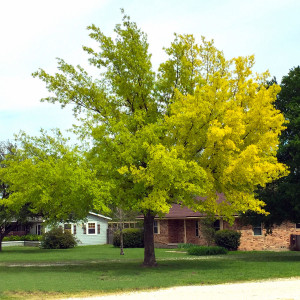
An East Texas species, this water oak is exhibiting iron deficiency in the alkaline soil farther west in the state.
1. Where do you live? Trees can be very site-specific. Most East Texas trees won’t do well in the alkaline soils and low humidity of the western portions of Texas, and West Texas trees won’t fare well in wet ground. Some trees may be winter-hardy only along the Gulf Coast, while others need the colder winters of North Texas to thrive. Your best bet is to talk your plans (and your plants) over with your local independent retail garden center for help that is specific to your area.
2. What type of soil do you have, and how deep is that soil? East Texas pines, water oaks, dogwoods and American holly selections must have acidic soil. They won’t grow in the alkaline soils that run along and west of I-35, and to change the soil enough to allow them to do well would cost tens of thousands of dollars per tree. If you live with alkaline soils, stick with the types that are suited to those conditions.
3. How large do you want the tree to grow? Consider the size of your lot and whether your house is one or two stories tall. Look overhead to see if power lines are in place. If there are, plant so that your trees will never grow into them. Large tree species need to be 20 or 30 feet away from two-story houses and 50 feet back from power lines. Smaller species can be proportionately closer.
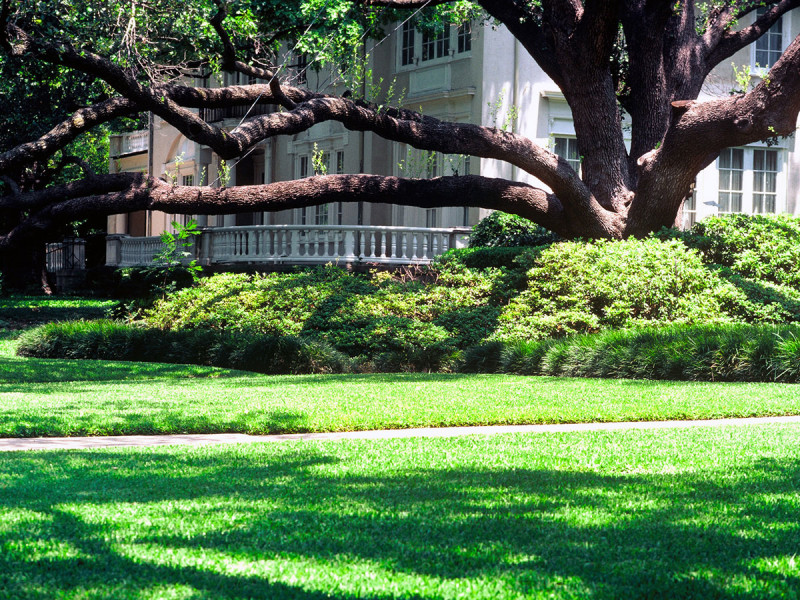
Know the mature size of the tree you are planting. A live oak like this can reach a spread of 65 feet.
4. How many other trees do you have in that part of your landscape already? One large shade tree may be perfect. Three may be too many. Sadly, there are gardeners out there who don’t know when to stop planting. Crowded trees ruin one another, so don’t push your limits. One or two trees of appropriate size will be all that are needed in standard urban front yards, with one or two more in the back.
5. Are there foundations, walks, patios or drives nearby? You do have to be concerned about large surface roots developing over the years. Stay at least 10 to 20 feet back and you should have no problems. If surface roots do become troublesome, have a certified arborist cut them and install root barriers to prevent any damage.
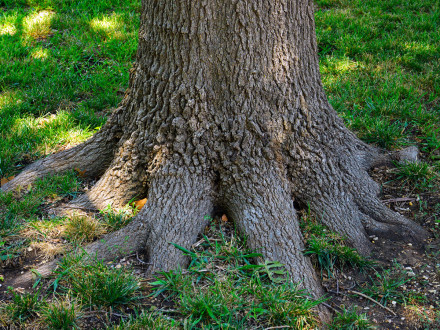
Be aware of certain varieties’ propensity for large roots. These healthy red oak roots could damage hardscaping if not allowed sufficient room to grow.
6. Are there any special considerations to be aware of at the outset? This is where “fast growth” usually crops up. And that’s when I tell people that fast growth is a terrible criterion on which to choose shade trees. All fast-growing trees have at least one fatal flaw that will limit their life expectancy to just 10 or 25 years. By the same token, don’t get too wrapped up in fall color, spring flowers or other seasonal attributes. If a top-quality tree has them, so much the better, but many of those features are present only a couple of weeks out of the year. You want a tree that looks great all 52 weeks.
Best large trees for Texas
This is a list that is somewhat arbitrary, particularly as you head into deep South Texas or the north reaches of the Panhandle. However, for most of the state, these would be my recommendations: live oak, Shumard red oak, chinquapin oak, bur oak, cedar elm, pecan and (the one non-native among them) Chinese pistachio. If speed of growth is of little concern, southern magnolia will do well in much of the state, but it is truly slow growing. In East Texas’s sandy soils, water oak, southern red oak, willow oak and bald cypress will all be well suited.
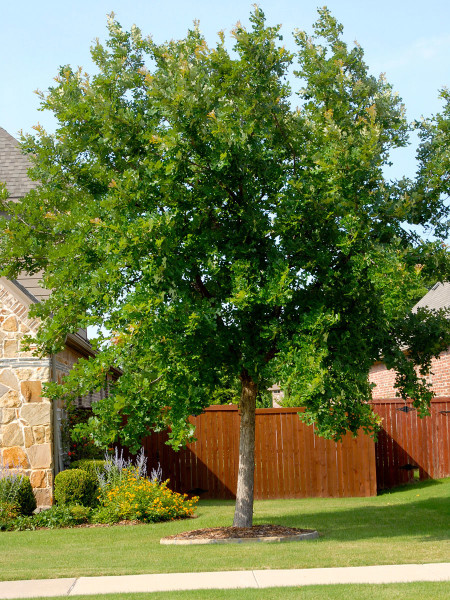
This young bur oak will grow into a magnificent giant, reaching a height and width of approximately 60 feet.
Best small and medium-sized trees
When you don’t have enough room for one of those large shade trees, you step down to something more compact. Candidates would include ‘Little Gem’ southern magnolia and the even-smaller ‘Teddy Bear’ magnolia, golden raintree, ginkgo, redbud, Mexican plum, tree-form yaupon hollies and possumhaw hollies, larger tree-form crape myrtles, and in East Texas, dogwoods.
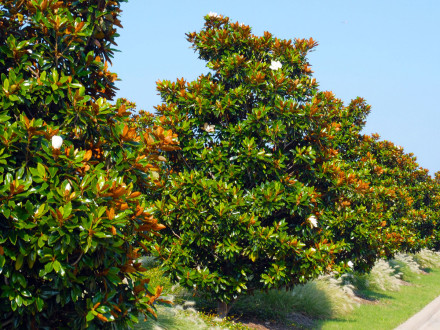
‘Little Gem’ southern magnolias are increasingly popular choices for spots that require small to medium-sized trees.
ALTHOUGH I GROW DOZENS OF HERBS from all over the world, I have to admit the thymes are my favorite. They are reliable, well-behaved performers in the garden. There are more than 350 species of thyme worldwide. All are small, evergreen perennials with spikes of pink, purple, or white flowers.
Popular varieties
Here’s a rundown on several varieties to grow at home.
• French or Common Thyme (Thymus vulgaris) This sub-shrub is the thyme of the kitchen garden. One attractive cultivar for hanging baskets is Silver Thyme (Thymus vulgaris ‘Argenteus’).

French thyme, or common thyme, is the bushy staple of many kitchen gardens. Photo © Diane Morey Sitton.
• Red Creeping Thyme (Thymus praecox subsp. britannicus) The tiny leaves of this thyme have very little scent or flavor, so it is mostly used ornamentally as groundcover. The flowers are purple to mauve. Commonly sold cultivars include Doone Valley, Kew, and Albus.
• Lemon Thyme (Thymus x citriodorus) This is a spreading sub-shrub reaching a foot tall and bearing tiny, egg-shaped leaves. Lemon thyme is one of the best for cooking, surpassing even common thyme in some opinions. Watch for variegated cultivars such as Aureus (golden edged), Golden King (mostly gold), and Silver Queen (cream to light yellow edged).
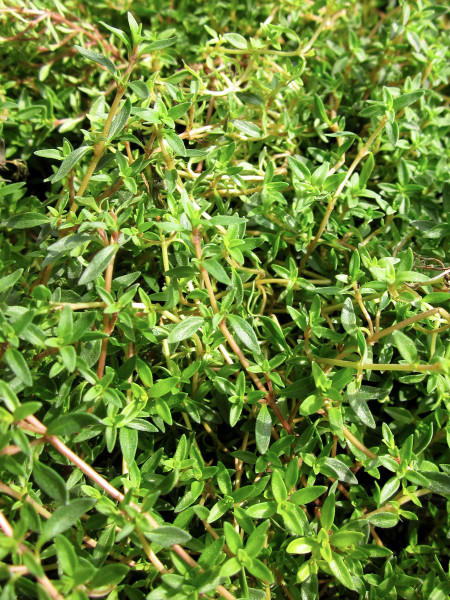
Caraway thyme tolerates humidity, making it a popular groundcover in the South. Photo © Diane Morey Sitton.
• Caraway Thyme (Thymus herba-barona) This creeping thyme grows 2 to 5 inches tall with bright pink flowers. Caraway thyme comes from the islands of Corsica and Sardinia, so it can take higher levels of humidity and rain than other thymes, making it a good candidate for southern gardens.
Cultivating thyme
All of the thymes you are likely to come across have the same basic growing requirements – lots of sunshine and well-drained soil. Thyme is a modest herb that spreads slowly. It needs regular watering during its first year but can withstand drought conditions once established.
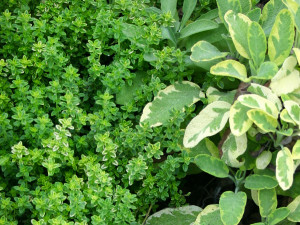
Lemon thyme and golden sage are combined in this low-growing fragrant border. Photo © Ann McCormick.
Use thyme in the front of your garden beds as a border that complements more showy ornamental plants. You can grow thyme from seed, but there’s hardly any reason to do so since it propagates easily by other methods. Thyme’s horizontal growth habits mean that lateral branches are easily rooted. You can also make softwood cuttings and root them in potting medium.
A sprig of thyme may be clipped any time of year to enjoy the fresh flavor in foods. Harvest culinary thymes just before they bloom in early summer and a second time after Labor Day. You can safely clip about a half of the plant’s growth.
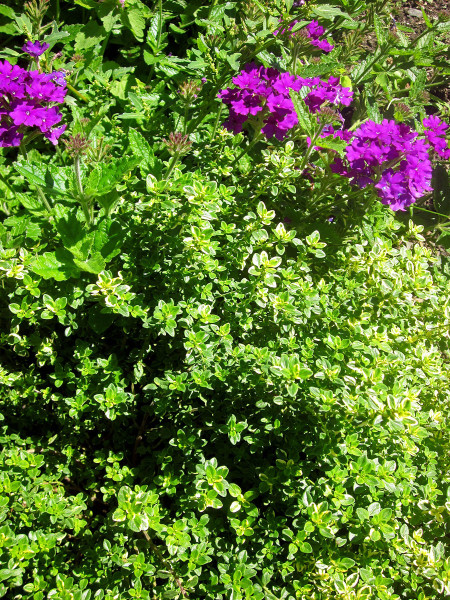
In the company of colorful purple verbena, variegated lemon thyme makes itself at home in a border planting. Photo © Diane Morey Sitton.
Enjoying its benefits
In the kitchen thyme gives a hearty flavor to soups, gravies, and meat sauces. It is a key ingredient in Bouquet Garni and Herbes de Provence, two traditional herb mixes in French cuisine. Add fresh thyme to steamed cabbage. Lemon thyme is especially good with poultry or added to herbal vinegars.
Garden thyme is the source of thymol, a chemical commonly used in oral hygiene products for its anti-oxidant and anti-bacterial properties. Because it is also anti-spasmodic and expectorant, it’s beneficial in herbal teas for cough and upper-respiratory complaints.
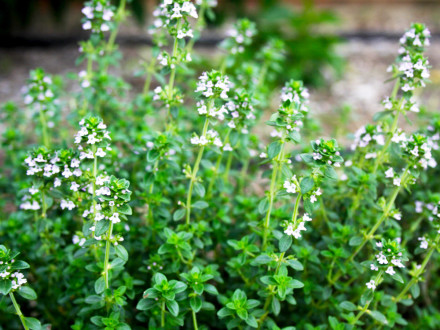
Clusters of pink, white or purple thyme blossoms provide bees with nectar for delicious honey. Photo © Ann McCormick.
Thyme is favored by beekeepers for growing near their hives. It is said that bees feeding on thyme produce an excellent honey. In folklore thyme is also reputed to be a remedy for bee stings when rubbed on the injuries.
If you’re thinking of adding an herb or two to your garden this fall, make it one of the thymes. They are reliable perennials with a lovely aroma.
Note from Neil: This is Greg Grant’s fourth article in a series for us on Landscape Principles. Click here to look back at our August 2015 edition and its links to the three preceding articles.
THIS ISSUE WE CONTINUE with the fourth of my personal five basic principles of landscape design. I’ll readily admit that I’m no landscape architect or professional designer. I do love design, however, and I’ve distilled these five principles over many years of both visiting fine gardens and attempting to create aesthetically pleasing ones of my own. So far we have covered repetition (the most important), dominance (the most abused), and scale (the hardest to grasp). In this article we’ll take a look at balance, thankfully a bit easier to understand.
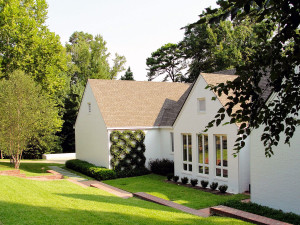
Asymmetrical balance is achieved with a dynamic espaliered shrub that seems to equal a wall of windows in volume.
In my opinion, all landscapes should appear visually balanced. I say “appear” because we can’t actually weigh them. I’m also of the opinion that each main view should be balanced (just as each main view should have only one dominant focal point).
So what is balance?
Stand at the road or edge of your property and look back toward your home and garden. Now find what you would consider the center axis of this image and picture your entire landscape and home sitting on a balance beam with each side being weighed. The idea is for the opposite sides to visually weigh the same.
There are two kinds of balance – one much easier to manage than the other. Balance can be either symmetrical or asymmetrical. Symmetry is often the norm in formal-style landscapes — utilizing the very same plants, house elements, and hardscape on either side of the axis (often the front door).
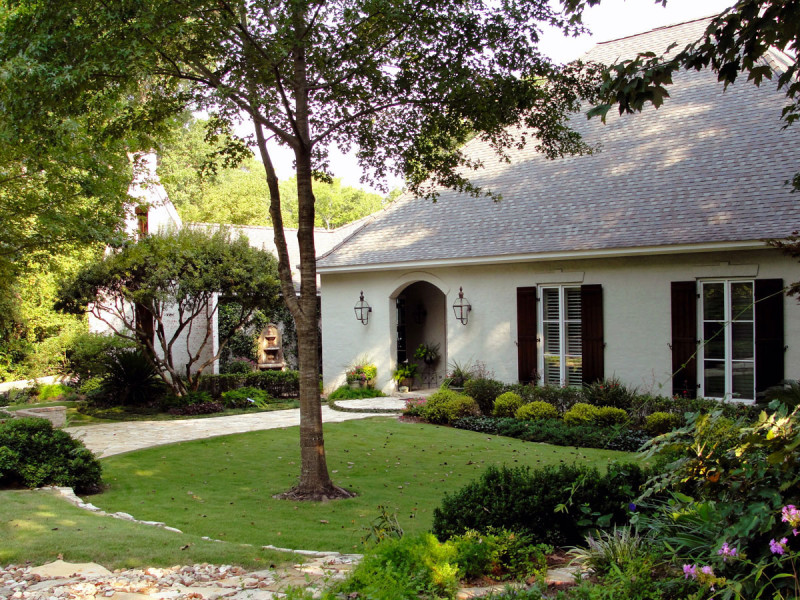
An off-center entryway and an adjacent structure all required complex decision-making, but these landscape elements have been weighted beautifully.
Naturally, the other form of balance is asymmetrical, where landscape features on either side of the central axis are different but must still visually weigh the same. Picture a house with a large attached garage jutting up and out on the left side. This configuration would generally require trees or larger plant materials on the right side of the landscape to help balance the house.
Or perhaps there is a giant specimen shade tree on one side of the front yard. This means the other side needs enough smaller trees, shrubs, and mass to match that volume. In other words, it might take three medium-sized trees and a mass of dwarf shrubs to visually weigh the same as the giant shade tree on the opposite side of the landscape.
Certainly the task of totaling visual weights is complicated — and the difficulties of achieving balance increase with greater numbers of plants and larger homes and lots. But it has to be done! I like to think of my balance beam as having building blocks stacked on either side, including large, medium, and small squares, circles, and triangles. To me, breaking it down into simple abstract forms makes the task easier. But to others, squinting and peering at a cloudy Monet-like view is more helpful, so if picturing handfuls of colored and textured puffs on either side of the axis helps, go with it.
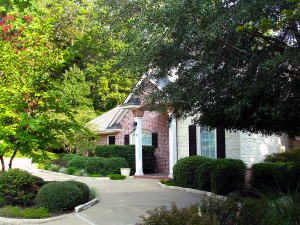
Balancing the “weights” of asymmetrical architectural features and varied building materials often requires large trees, extended hedges or heavily textured plantings.
I mention texture because coarsely textured plants and features appear heavier than finely textured elements. A mass of fatsia, for example, would “weigh” more than a mass of maiden grass. And rock, stone, and brick would generally weigh more than wood and plant materials.
In striving for balance, be aware that the “central axis” may not always be in the center. Perhaps the obvious dividing line in your front landscape is a front door and sidewalk set off to one side of the house. This means visual weight will need to be lengthened farther on the opposite side to keep the landscape balanced. When the view isn’t balanced, the eye focuses on the heavier side. So if your balance beam looks like it’s going to flip over into your neighbor’s yard, things are probably “too heavy” on that side, and all eyes will settle there. Once in a blue moon, of course, there might be legitimate occasion to draw the eye away with the help of an out-of-balance landscape, but that is rare – and I don’t recommend the process unless you live next to a junk yard!
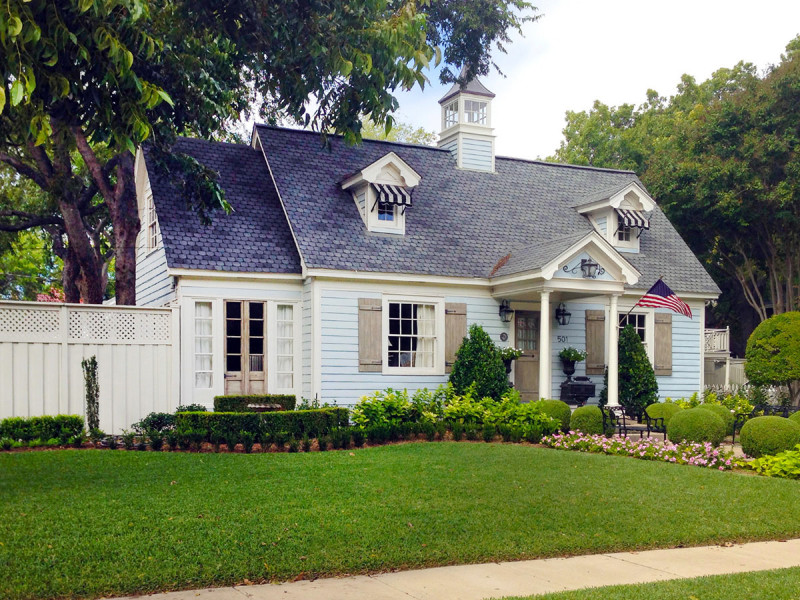
A front door and sidewalk that no longer mark a “center” axis present special landscaping challenges. Large trees on either side help balance the weight. Photo © Neil Sperry.
To be quite honest, really good landscaping is more about thought and planning than about doing. Thinking the process through almost always produces a better finished product, in addition to saving time and money. If you’ve incorporated repetition, dominance, scale, and balance, you should wind up with unity, the subject of our final installment!
So march yourself out to the curb and see if you can find these key principles in your landscape. Though I rarely critique other people’s landscapes, I try to cast a discerning eye toward my own. I actually enjoy the process and hope you will, too.
CAPTURING FALL’S ESSENCE in fresh arrangements is simple. Gardens, roadsides, meadows and woodlands are filled with the colors, textures and shapes of the season, and it’s there for the picking. Think big by harvesting an armful of goldenrod, or go small with snips from your favorite fall bloomers. Either way, inspiration comes easily when that first hint of autumn is in the air.
Be a collector
Start by strolling through accessible gardens. The salvia clan celebrates the season with bloom spikes in lavender, purple, blue and white. Cockscomb, rudbeckia, ornamental grass plumes, and rose hips abound. Croton and coleus foliage add to the season’s vibrant palette. Sunny fields yield jewelweed, broomweed, liatris and native sunflowers. Roadsides beckon with numerous species of goldenrod, native beebalm, indigenous grasses and other wildings.
Plan to collect early in the day when flowers, foliage and grasses are fresh but free of dew. Immediately place them upright in water. Gather more items than you think you will need.
Rules of arrangement
When working with fall’s bounty let your inspiration be your guide.
Keep it simple by displaying a single native sunflower in a cobalt bottle or by combining snippets of flowers and foliage in a vintage glass jar. Fashion a dazzling fall sampler by showcasing goldenrod, salvia, sunflowers and berry-laden stems in a sturdy antique crock. Want an arrangement as airy as a brisk fall walk? Design a bouquet using meadow grass and feathery-looking celosia. Or, play up goldenrod’s glory by standing the long, luminous sprays in a wooden pail.
Mood-setting containers include vintage glass pitchers, collectible bottles, watering cans, bark-covered vases, and almost any kind of bin, box, or basket that accommodates a container to hold water.
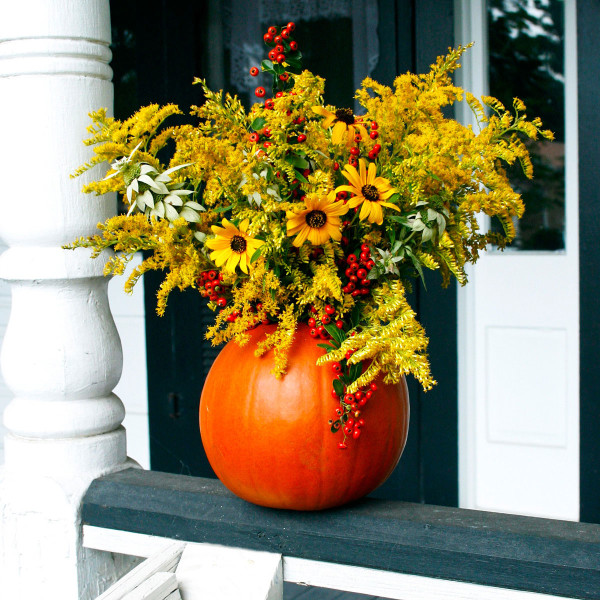
A brilliant pumpkin container and pyracantha berries punctuate an arrangement of autumn “weeds” and lingering garden blossoms.
Seasonal sensation
Pumpkins used as vases exploit the season’s capricious nature with their shapes and textures, not to mention hues that range from deep orange to grayish blue to creamy white. Select a pumpkin with a flat bottom. Transform it into a vase by cutting off the stem end and removing the seeds and pithy membrane. Insert a water-filled jar to hold the stems in place while hydrating the flowers and foliage.
Whether simple or ornate, fresh fall bouquets capture the spirit of the season. As one-of-a-kind decor they lend captivating colors and tantalizing textures to entries, kitchens, living rooms, garden rooms, patios, and porches.
Just a perfect finish to the growing season!
WHEN WE STARTED OUR GARDEN CENTER years ago, I searched for gazing globes. I remembered them from my childhood in the Midwest and considered them attractive and funky garden art. My business partner deemed them tacky. This dichotomy continues today; you either like gazing globes or you find them totally ridiculous.
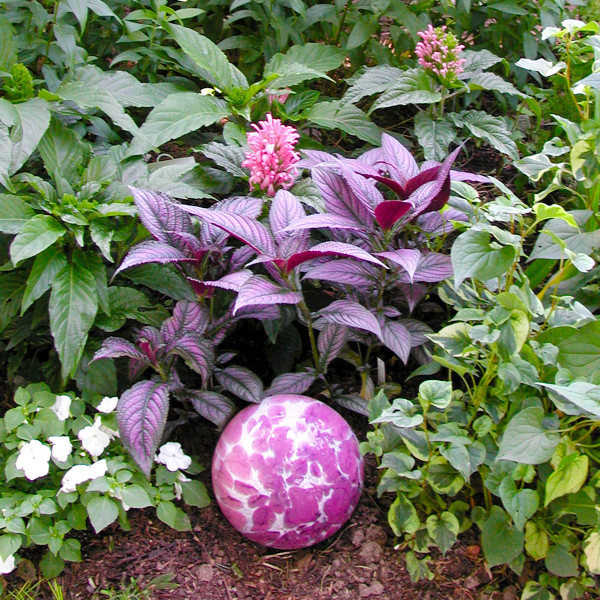
A pink mosaic globe carries out the color scheme as it nestles beneath purple Persian shield and pink Brazilian plume flowers. Photo © Mary Wilhite.
I remember a man who came to the nursery and upon noticing a gazing globe in our garden asked, “What is that for?” I explained that it was a garden ornament, but he still wanted to know its function. I had to admit that I only knew it as art, without getting into a philosophical discussion of the purpose of art in culture.
History
Now I could have explained to this man that garden balls have a long history. Starting in the 13th century, Italian glass blowers made decorative balls in various sizes and touted them as novel decorative ornaments for inside and outside. Many noblemen displayed these globes as symbols of wealth.

A shimmering pink and gold globe stops the eye in a planting of Brazilian rock roses. Photo © Mary Wilhite.
In the Victorian era, glass blowers learned to line the interior of the balls with mercury and solid colors, making them very reflective. These shiny balls enjoyed another period of popularity inside houses as well as in gardens. A large reflective ball would be placed on a side table or pedestal just inside the dining room door so servants could stand outside the room and still see the guests to know when they needed service. These globes were known as butler balls.
Folklore
Many stories grew up around gazing globes, one of which claimed that a globe placed next to the front door would protect the house from evil spirits and witches. A witch would see her reflection in the shiny sphere and be frightened away. These spheres were known as witch balls. On the lighter side of this tale was the belief that the pretty globes attracted fairies to the garden, gaining the spheres the name fairy balls.
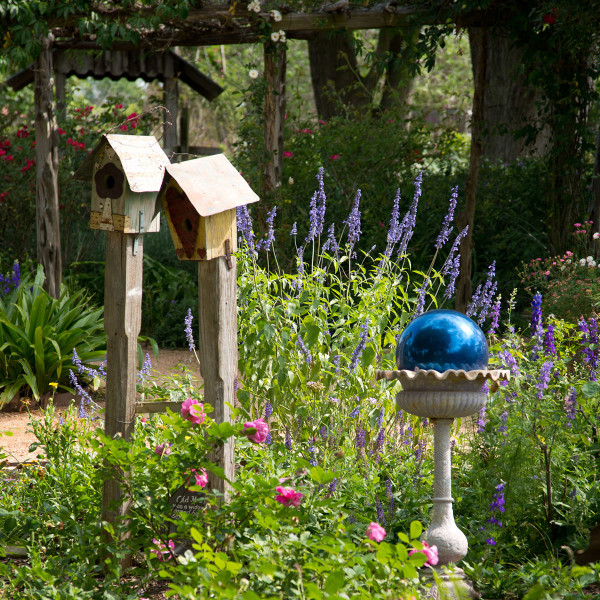
In this smile-worthy garden setting a shiny blue globe is perched in a birdbath beside rustic birdhouses. Photo © Neil Sperry, Antique Rose Emporium.
Modern uses
Brightly colored, reflective gazing globes enjoyed a modern revival in the mid-20th century, again as symbols of wealth and prosperity. More recently, art glass and mouth-blown globes have gained popularity as decorative garden objects. Flat-bottomed globes can be displayed on tables or placed on top of the ground amid short flowers or foliage plants in a flowerbed. Mouth-blown globes have a stem on them so need to be placed on a pedestal or in a pot with a diameter slightly smaller than that of the globe itself.
Choose globes in complementary colors to the flowers in the bed for a soothing look. For more punch, add a ball in a contrasting hue to the surrounding flora. Nestle the sphere in the landscape so it looks like it is growing along with the plants.
Care of your globe
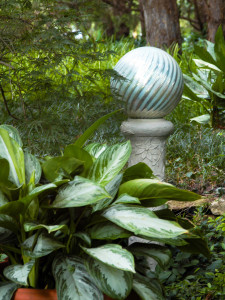
A favorite Sperry shade garden accessory, this striking globe has a stand of equal importance. Photo © Neil Sperry.
Although most gazing globes are made of glass, the glass is usually very thick and not fragile. I have owned a globe for over 20 years and leave it outside all year ‘round with no problems. If you live in an area with freezing temperatures in the winter, you may want to bring your globe inside for the winter, especially if it has a mosaic finish on the outside. For a globe with a silvered interior, keep the stem completely covered to prevent moisture from collecting inside the ball and damaging the finish.
BY THE END OF A LONG, HOT TEXAS SUMMER, we’re ready for something to invigorate the exhausted landscape, to rejuvenate us, and to remind us that a change in seasons is just around the corner. Sweet autumn clematis fulfills these desires.
Sweet autumn clematis (Clematis terniflora or C. paniculata) is a deciduous and fragrant, fall-blooming vine that hails from Japan and has adapted very well to Texas. In fact, it has even escaped cultivation and invaded forest edges, rights of ways, and urban green spaces, especially near creeks. A vigorous vine, it can grow 15 to 30 feet tall and wide and easily cover a fence, trellis, or arbor within a growing season. It can also be grown through large shrubs, but growth must be monitored to make sure the vine does not overwhelm the shrub. Without support, it can form a dense, tangled ground cover 6 to 12 inches tall, choke out most weeds, and hide old tree stumps or other eyesores in the landscape.
Abundant blooms
Each leathery textured, shiny green leaf consists of three to five leaflets 2 to 3 inches long. Come late August or early September, this vine bursts into bloom with quarter-sized, creamy-white flowers that emit a sweet, vanilla-like fragrance. These flowers appear in such abundance that they nearly obscure the foliage and give the appearance of a bank of snow. After the flowers have finished blooming, they are replaced with silvery-gray, plume-like seed heads that adorn the vine and provide fall and winter interest. Seeds can easily germinate in the landscape and produce seedlings that may need to be managed to keep the vine in check.

These creamy white flowers are produced on vines that grow vigorously and without hesitation on vines that thrive on neglect. Photo © Steve Huddleston.
Sweet autumn clematis, like other clematis varieties, grows best with its roots in the shade and its foliage in the sun. Unlike most other species of clematis, though, sweet autumn clematis will thrive and bloom well even in considerable shade. Morning sun and afternoon shade are ideal, however, as is dappled shade throughout the day. Shade the roots by planting low shrubs, perennials, or groundcovers at the base of the vine. Cool the roots even more by mulching with 2 or 3 inches of organic mulch. Good companion plants for sweet autumn clematis include butterfly bush (Buddleia davidii), the purple-leafed loropetalum, and the purple-fruiting American beautyberry. It’s also a beautiful backdrop for late summer-blooming ornamental grasses and the bright red flowers of Turk’s cap.
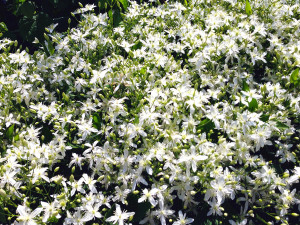
To get sweet autumn clematis started, provide it with a bit of sunlight but keep the roots cool, shaded by other plantings, mulch or even a large rock. Photo © Neil Sperry.
Getting it started
Purchase sweet autumn clematis in better nurseries and garden centers. Plant at any time from containers, although fall is an ideal time because the vine will establish more easily in cooler weather. Plant sweet autumn clematis on centers 15 feet apart in any well-drained soil enriched with organic matter. Once established, this vine has low water requirements and can even survive in the eastern third of Texas most years on rainwater alone. It will require only occasional irrigation in any part of Texas. Sweet autumn clematis is the easiest of all clematis varieties to grow. In fact, it thrives on neglect. It’s hardy in USDA Hardiness Zones 5-10 and suffers from no serious insect or disease problems. It is easily propagated from seeds or cuttings and makes the ideal “pass-along” plant to share with friends or family. Since the vine blooms on new growth, prune hard in fall after flowering or in early spring.
Sweet autumn clematis will certainly satisfy your need for visual and olfactory refreshment in the landscape at the end of summer. In fact, it’s summer’s last hurrah and a signal that cooler, more pleasant gardening days are ahead!
COLLARDS AND KALE ARE “KISSIN’ COUSINS” in the Plant Kingdom. Along with broccoli, cauliflower, Brussels sprouts, cabbage and a few others, they all originated from a wild cabbage plant that looked a lot like a collard plant — based on one at the Edinburgh Botanical Garden. Now if Crucifers (a family name) don’t get your taste buds excited, it may just be because you’ve had them overcooked or undercooked and missing the necessary spices and flavorings. On the other hand, if you like them raw and straight out of the garden, you’re likely barefoot, have flowers in your hair, are listening to folk music and are a card-carrying vegan — or you know one. The Adams family is somewhere in between.
Collards and kale are both excellent sources of Vitamins A, C and K. In fact, anyone on blood thinners should ask their doctor if it’s OK to consume kale (particularly), but also collards and other greens, more than once per week. They also contain phytochemicals like Lutein and Zeaxanthin. Glucosinolates present in most Crucifers convert to sulforaphane, and the benefits can include reduced incidence of cancer and improved HDL cholesterol (the good stuff).
Fall is the best time to grow these vegetables. Even though it can still be very hot in September, the seeds will germinate. To get transplants ready for an October transplant schedule, sow them in seed flats where they get morning sun and afternoon shade. Foam cups with holes poked in the side near the bottom of the cup and filled with a commercial potting soil make an inexpensive and cool growing container. Wait a little longer into October to direct seed and you should get a good stand in most areas of Texas. Plants need to be 12 to 24 inches apart, so don’t plant them too thickly. Fortunately, seedlings are easy to transplant, so you can carefully dig the extras with a trowel and start another row after the plants are a couple of inches tall. When the seedlings are established and begin to make growth, it’s time to sidedress with fertilizer. One tablespoon per 2 feet of row using a soluble fertilizer like 15-5-10 should keep them growing. (Make sure it doesn’t contain a weed killer for the lawn.) Or you can use an organic-based fertilizer (check bag for rate) or foliar feed them with a hose-on sprayer. Most cool-season vegetables are heavy feeders, so don’t spare the nitrogen!
There aren’t too many pests to worry about in the fall. Beetles can sometimes wipe you out, but if you catch them early, a few shots of an organic pesticide containing spinosad will usually take care of them. Caterpillars like the cabbage looper can be controlled with Bt (Thurcide, Dipel, etc.), and then all you need to do is print out some recipes, pick and clean the stuff and Get Healthy!
Fancy recipes aside, we like to chop up some bacon, cook it crisp and add chopped onions, a sprinkle of granulated garlic and maybe a few pepper flakes. Toss in the torn-in-little-pieces greens, stir them around to flavor (some may prefer to pour off most of the bacon fat), and douse with a few tablespoons of balsamic vinegar or plain cider vinegar. Serve a heaping ladle full right next to the mashed potatoes and ribeye, grilled chicken or pork chop. It will set you free. If you have leftover greens, they are excellent mixed together with mashed potatoes for a little extra flavor.
There are lots of wonderful varieties to choose from. Collards include Green Glaze with glossy leaves, Morris Heading (a cabbage wannabe), Vates and Green Flash from Renee’s Seeds (www.reneesgarden.com, 6060 Graham Hill Rd., Felton, CA 95018). This last one was in our garden last year and although touted as slow to bolt — it did bolt and we loved the little flower clusters, a la miniature broccoli. Kale comes in a bewildering number of forms — Italian Heirloom (sometimes referred to as Dinosaur kale) is vigorous, and the leafy portion is easy to strip off of the stem (petiole). Tuscan Baby Leaf is similar but smaller, Red Ursa is a red Russian kale, and finally Redbor is almost too pretty to eat.
The cool-season garden is relatively easy going and free of pests. Whether you plant a big garden, a few raised beds or big nursery pots saved from a landscape project, you can have your own fresh greens, maybe some multiplying onions or chives, Sugar Snap peas and other cool-season garden vegetables just outside the kitchen door.
THE LADY BIRD JOHNSON WILDFLOWER CENTER has always seemed like hallowed ground to me: cathedrals of stone and steel rising up from a heavenly little parcel of ground in Austin. The sermon is resolute and consistent: “Conserve, restore, and create healthy landscapes.” As a member of the native-plant-loving congregation myself, I appreciate the mission and the message, but always felt a little levity was needed to balance the serious environmental work performed here. (After all, if you are trying to bring about change to the world, the human heart is the best place to start.) Then, like manna from heaven, the Luci and Ian Family Garden appeared on the prairie, bringing squeals of delighted laughter upon the wind.
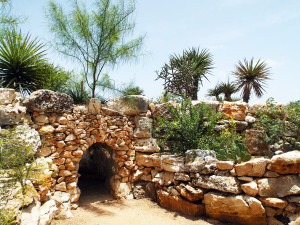
The darkened limestone cave entrance beckons young visitors. Inside are mysterious paintings of familiar and not-so-familiar creatures.
Completed in 2014, this 4.5-acre garden is a paradise for children. The open lawn entrance proves irresistible for kids who just want to run for the joy of it. A small herd was galloping through the grass during my visit, reminding me of frisky young colts frolicking in spring pastures. The layout naturally funnels visitors into the heart of the garden, where most kids make a beeline for the old-fashioned, hand-cranked water pump. They quickly find the buckets and fill them with water, pouring it through the honeycomb-holed limestone boulders and into thin rock fissures below. It will be an hour before they realize this is how rainwater runs through rock and comes out as spring water.
Dinosaur tracks invite young visitors to explore the creek, which is at first glance still, until they notice it is brimming with life. Fish, frogs, and turtles command kids’ initial attention, and they soon detect lots of other creatures, like tadpoles, dragonfly larvae, snails, and aquatic plants … all living together in this specialized ecosystem. You can almost see the lights switch on in their young minds.
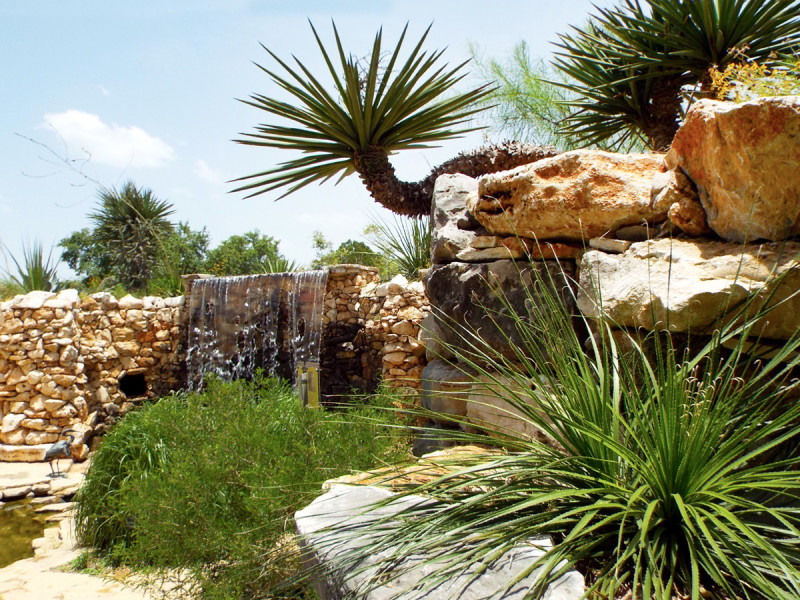
Beneath the arid desert landscape, surprisingly full of life itself, groundwater erupts from the parched earth, bringing forth a completely different ecosystem.
Downstream, the waterfall is magnetic, drawing children better than an ice cream truck. Attracted by the splashing water, they soon spot “ancient” pictographs on the walls of the grotto and begin to wonder who drew such scenes … and why? What kinds of creatures are in these drawings? Are these … were these real? And how can there be a desert above with all of this water below?
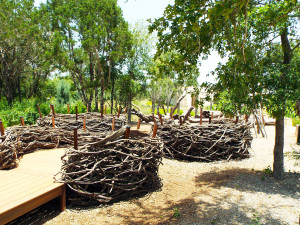
Fabricated from native grapevine, these giant nests playfully coax groups of children to mimic wildlife behavior such as frenzied feeding and hiding from predators.
Eager young eyes soon spot giant bird nests, a log playground, and a simple sand pile, complete with castle-building tools. They find themselves peering through the cracks at a wildlife blind, secretly spying on the birds and animals that visit a small pond. They wander through a giant spiral, embedded with strange spiral symbols … flowers, waves, a scorpion’s tail? And what’s a Fibonacci?
Soon enough, little bodies are tired and seek rest upon one of the many butterfly benches. Hmmm … they might even notice some of the bronze sculptures around the garden … quail, coyote, roadrunner…. ”Hey, I’ve seen those in real life.”

The jumbo-sized Fibonacci spiral inspires children to closely observe small “golden spirals” found throughout the natural world.
“Where are the adults during all of this?” you may be asking. They are nearby, in the sanctuary of live oak cloisters, ignoring their cell phones … witnessing their children learn about Mother Nature and grow into enlightened little people right before their eyes. Hallelujah!
CREATURES AND CRITTERS LARGE AND SMALL are such a natural part of landscapes that it’s no wonder folks want to celebrate their presence by showcasing animal replicas in their gardens. From armadillos to alligators, from rabbits to raccoons, all manner of wildlife statuary serve to create focal points, reinforce garden themes and express personal style. What’s more, the attention-grabbing qualities of animal art help camouflage weak areas in gardens by drawing the eye to intriguing sculptures.
Home is where the art is
Whether classical, whimsical, or woodsy, the style of animal statuary should keep with the overall tone and theme of the garden.
Showcase lions and other large life-size statues at entryways, at the end of long, straight paths, or as prominent features in formal gardens. Elevate their status by displaying them on platforms. Add to the realism of woodland settings by placing deer near a pond or squirrels beside a footbridge. Water gardens call for fish, frogs, and aquatic birds, among other water-loving species.
Domestic darlings, too, exude character and mood. Pose a cat in an herb bed, atop a stone wall or on a porch railing. Place a dog by a gate. For fun, include a rabbit or rooster in a veggie garden. Or, display your inner flamboyance by creating a front yard parade of pink flamingos.
Center of attention
Regardless of where you position animal statues, select figures that are proportional to their surroundings. Not every garden is spacious enough to accommodate life-size replicas of large species; likewise, unless they are carefully placed, small figures can be lost in vast landscapes.
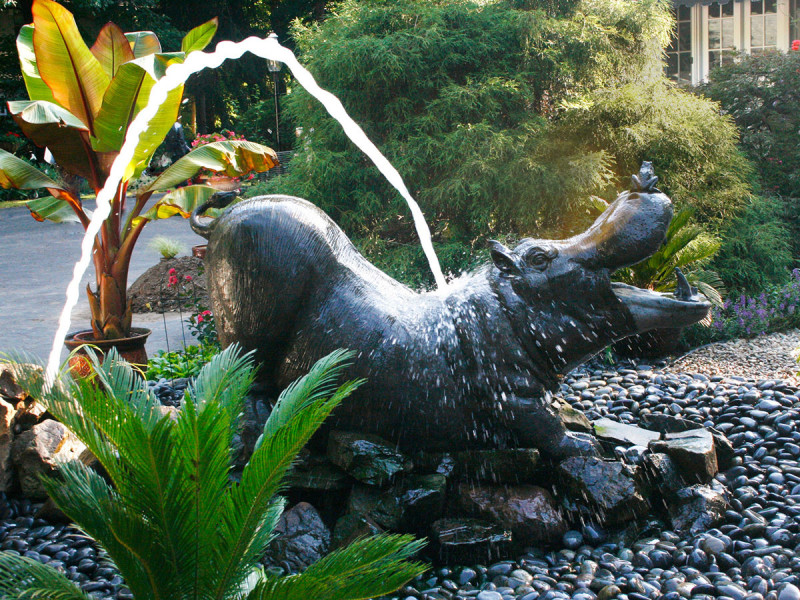
A large hippo bathes joyfully in its own rock-filled pool, all in scale with the expansive patio and large specimen plants.
Overgrown foliage engulfs animal figures. Prune it to keep it in bounds. Bunching too many figures in one space also diminishes the art’s effect. Avoid clutter. It creates confusion and overwhelms the eye.
Aging gracefully
When shopping for animal figures, consider how age might affect the materials. With the passage of time, copper’s pinkish/golden sheen takes on a coveted green patina. Stain lines or even a delicate layer of moss may appear on stone and concrete. When exposed to the elements, wood weathers. Resins’ rich hues can fade with age and sunlight.
Whether you select a forest dweller, farm animal or jungle beast, animal statuary will add interest, character and mood to your garden.
